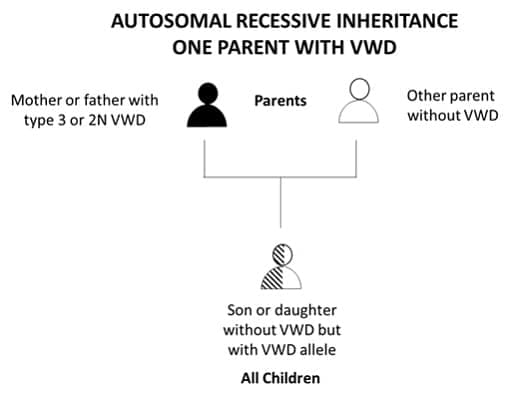How von Willebrand Disease Is Inherited
Most people who have von Willebrand disease (VWD) are born with it. VWD is caused by genetic changes that are almost always inherited (passed down) from a parent to a child. A person’s genes provide instructions on how to make proteins, such as the von Willebrand factor (VWF) protein. Each person has two copies of most genes, one from his or her mother and one from his or her father. Each copy is called an allele. In people who have VWD, there is a change in the gene for making the VWF protein, called a VWD allele. VWD can be passed down from either the mother or the father or both parents to the child. There are two different ways that VWD can be inherited, autosomal dominant or autosomal recessive, depending on the type of VWD present.
Type 1 and Most Type 2 VWD
Autosomal dominant VWD is caused by changes in only one copy of the gene related to the disorder. In autosomal dominant inheritance, a child will inherit the bleeding disorder if he or she gets a VWD allele (the form of the gene that has a genetic change causing VWD) from one parent who has the disorder. The child of a mother or a father who has one of these types of VWD has a 1 in 2 (50%) chance of getting a VWD allele and having VWD. The symptoms may be worse than the parent’s or not as bad. There is also a 1 in 2 (50%) chance that the child will not get the VWD allele; in this case, the child will not have VWD and can’t pass it down to his or her children.
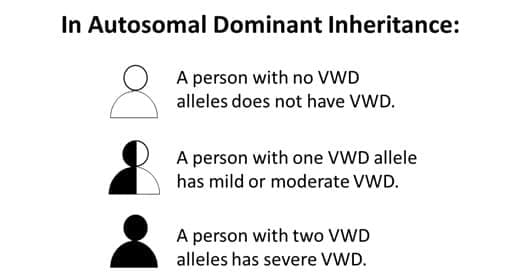
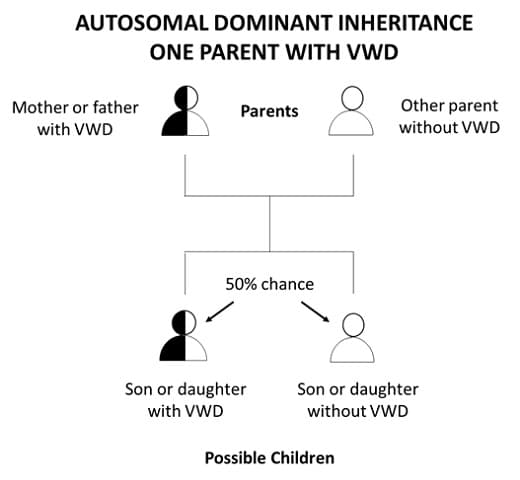
Rarely, both parents may have VWD. When this happens, the child could get either one VWD allele and one normal allele and have VWD like the parents (1 in 2 chance, or 50%) or get two VWD alleles and have a more severe form of the disease than the parents (1 in 4 chance, or 25%). There is a 1 in 4 (25%) chance that the child will not get a VWD allele from either parent; in this case, the child will not have VWD and can’t pass it down to his or her children.
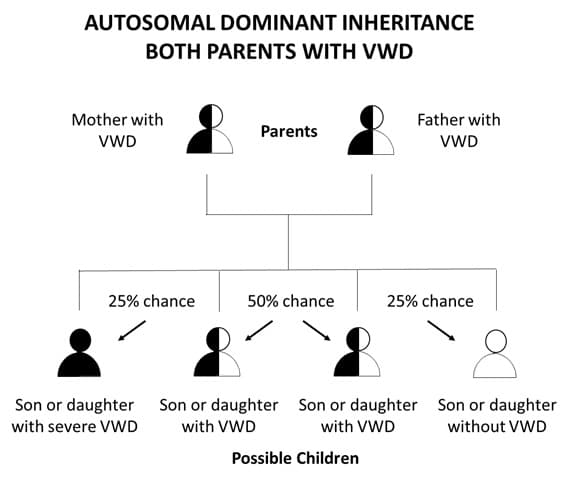
If one parent has severe type 1 VWD that was inherited from both of his or her parents, meaning that he or she has 2 VWD alleles, and the other parent does not have an allele that can cause VWD, all children will get only one VWD allele and have type 1 VWD that is less severe than the parent who has 2 VWD alleles.
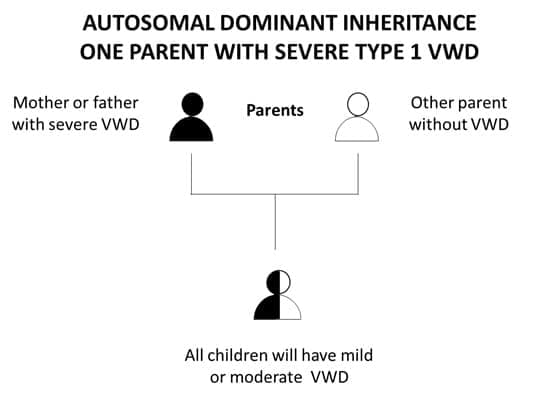
Type 3 VWD and Type 2N VWD
Autosomal recessive VWD is caused by changes in both copies of the gene related to the disorder, so that neither copy works correctly. In autosomal recessive inheritance, both parents have one VWD allele and one normal allele, but they don’t have the disorder; only a person with two VWD alleles will have the disorder. To have VWD, the child must get the VWD allele from both parents (1 in 4 chance, or 25%). A child may also get the VWD allele from one parent (1 in 2 chance, or 50%). If this happens, the child will not have VWD but can pass the VWD allele to his or her children. There is also a 1 in 4 (25%) chance that the child will not get a VWD allele; in this case, the child will not have VWD and can’t pass it down to his or her children.
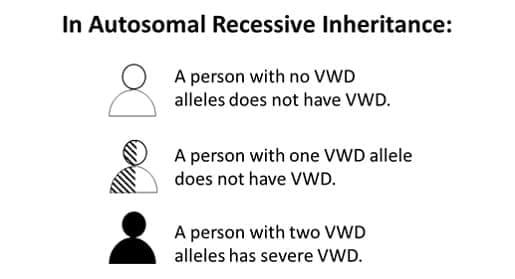
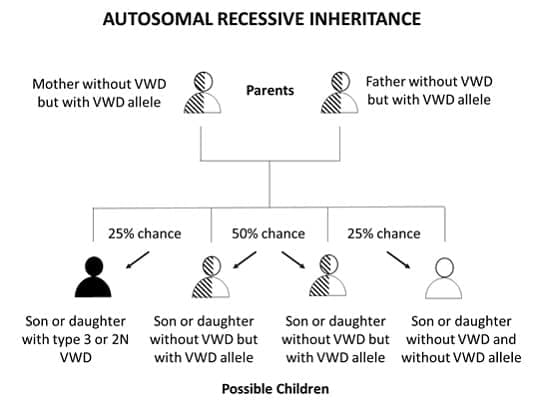
The child of a parent with type 3 or type 2N VWD will receive a VWD allele from the parent who has VWD but will not have VWD if the other parent does not have a VWD allele. However, all of the children can pass the VWD allele down to their children.
